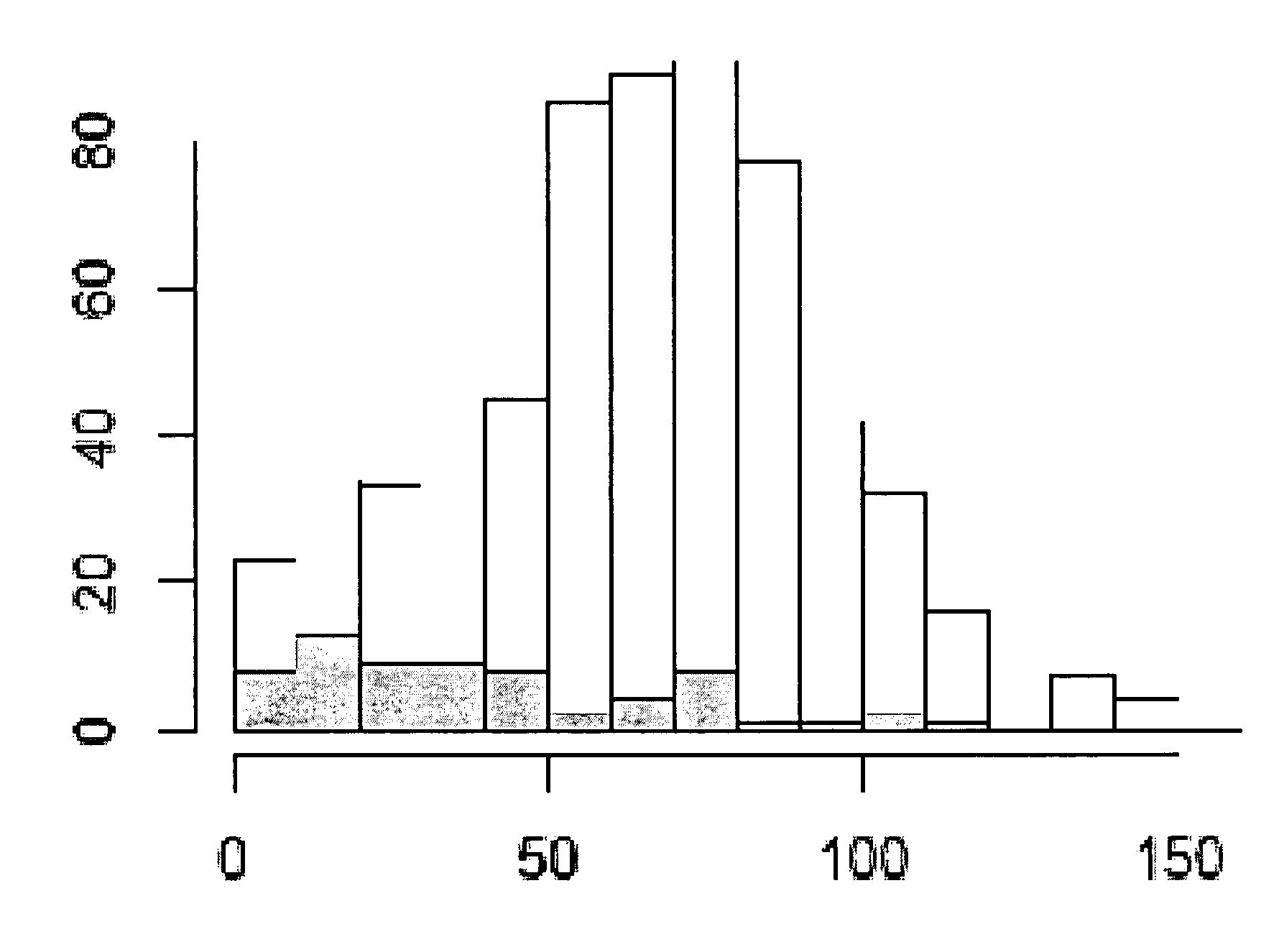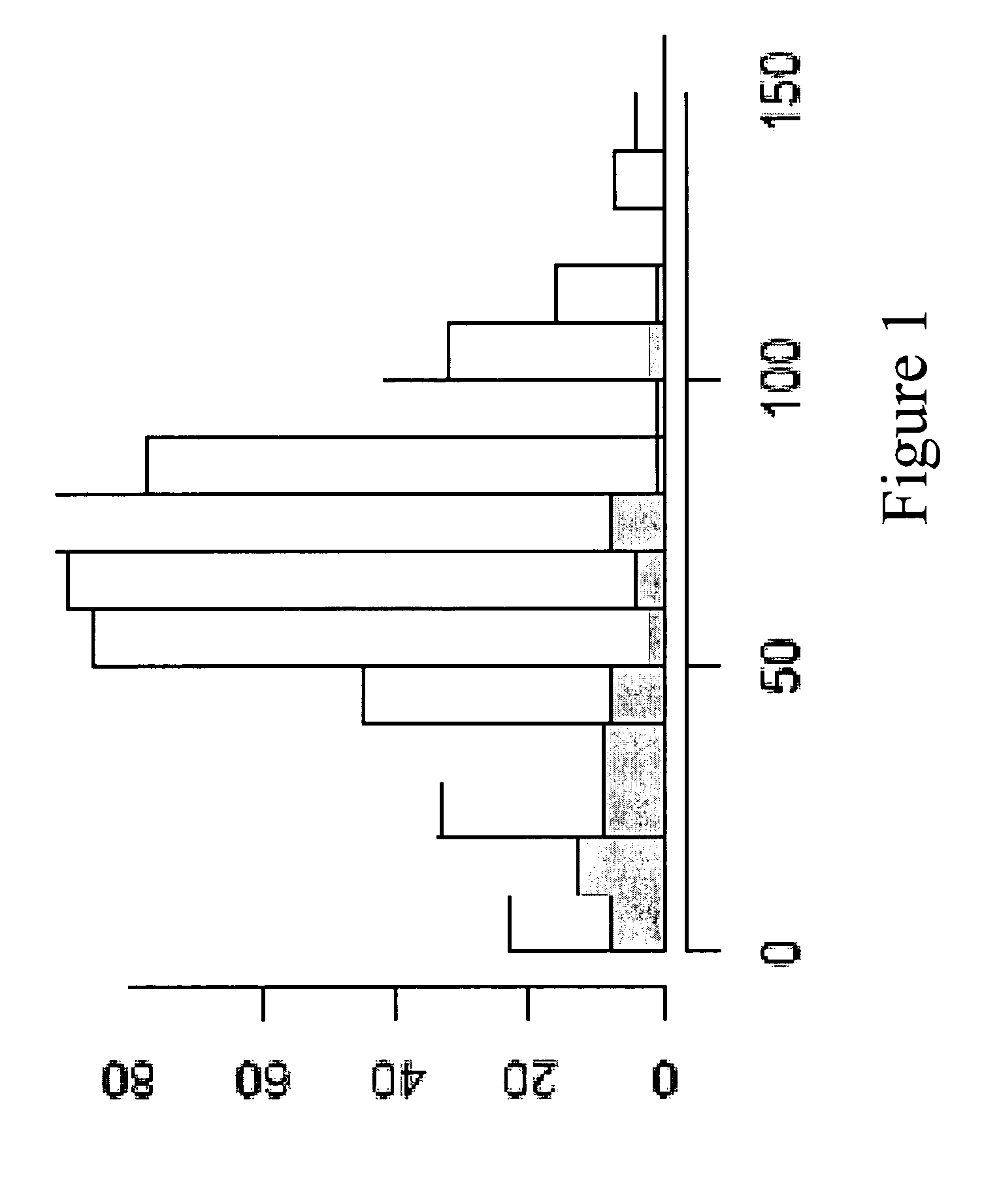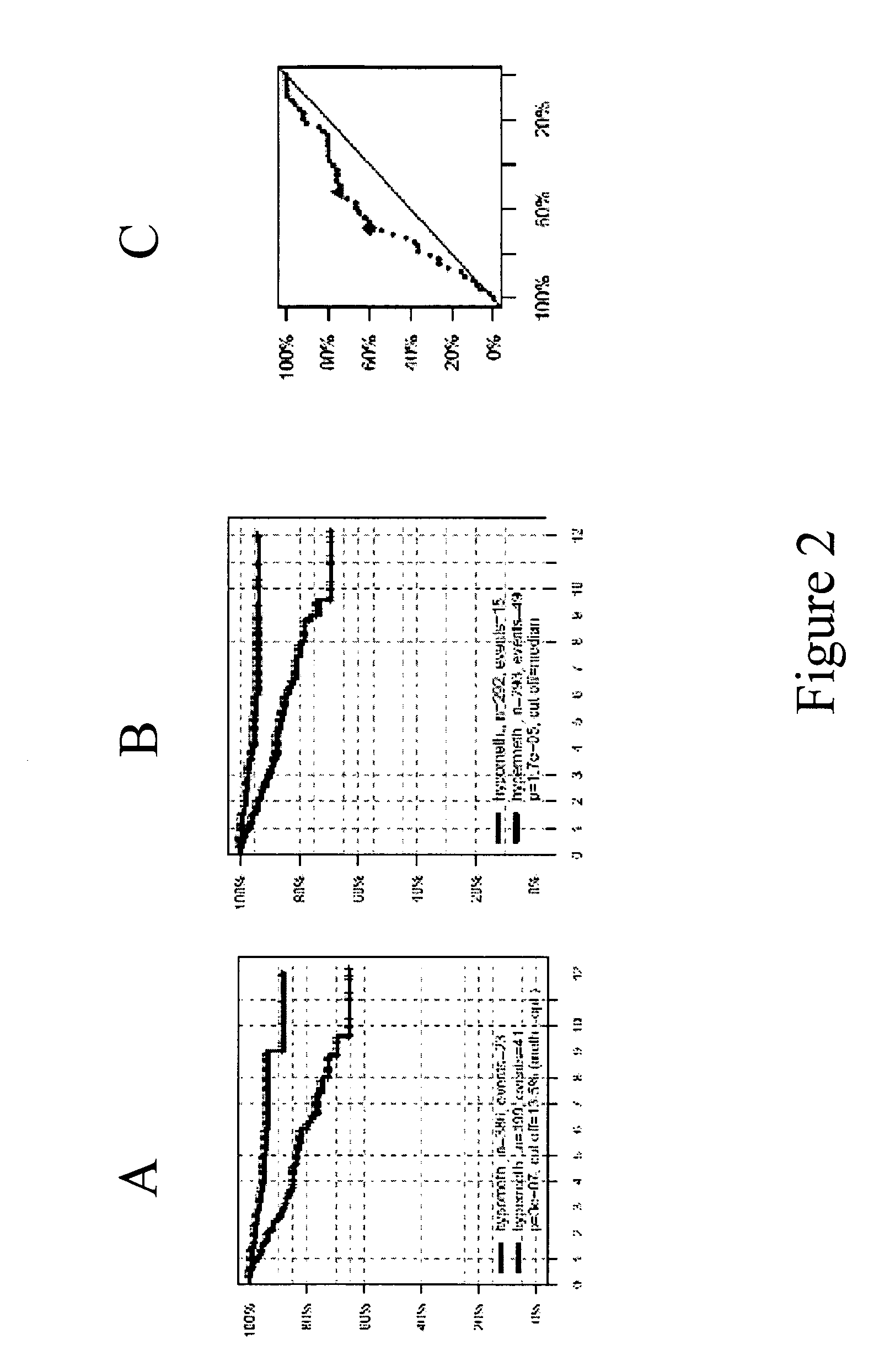Methods and Nucleic Acids For the Analysis of Gene Expression Associated With the Prognosis of Cell Proliferative Disorders
a cell proliferative disorder and gene expression technology, applied in the field of human dna sequences, can solve the problems of not revealing, no single molecular prognostic indicator applicable across all classes, etc., and achieve the effect of improving prognostic classification, identification and differentiation
- Summary
- Abstract
- Description
- Claims
- Application Information
AI Technical Summary
Benefits of technology
Problems solved by technology
Method used
Image
Examples
example 1
[0242]The aim of the investigation was to confirm the significance of the gene PITX as a prognostic marker and to optimize methylation cut-offs. It was decided to investigate prostate cancer. The marker should be suitable to split patients who undergo prostatectomy into two groups: one with a high chance of PSA recurrence and one with a low chance of PSA recurrence. In addition, the markers should provide additional information to Gleason grade analysis. A marker meeting these criteria will have an important clinical role in selection of prostatectomy patients for adjuvant therapy. It was decided to undertake the analysis by means of methylation analysis on a real-time platform (QM Assay). The QM assay (=Quantitative Methylation Assay) is a Real-time PCR based method for quantitative DNA methylation detection. The assay principle is based on non-methylation specific amplification of the target region and a methylation specific detection by competitive hybridization of two different ...
PUM
| Property | Measurement | Unit |
|---|---|---|
| temperature | aaaaa | aaaaa |
| temperature | aaaaa | aaaaa |
| temperature | aaaaa | aaaaa |
Abstract
Description
Claims
Application Information
 Login to View More
Login to View More - R&D
- Intellectual Property
- Life Sciences
- Materials
- Tech Scout
- Unparalleled Data Quality
- Higher Quality Content
- 60% Fewer Hallucinations
Browse by: Latest US Patents, China's latest patents, Technical Efficacy Thesaurus, Application Domain, Technology Topic, Popular Technical Reports.
© 2025 PatSnap. All rights reserved.Legal|Privacy policy|Modern Slavery Act Transparency Statement|Sitemap|About US| Contact US: help@patsnap.com



